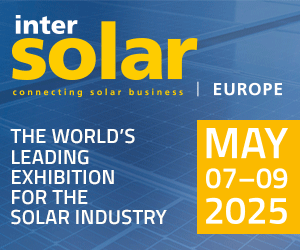ReportnReports report on the PV component market has a detailed analysis on PV cells, modules, wafers, polysilicon and inverters.
For more on this report: http://www.reportsnreports.com/reports/126865-global-solar-inverter-markets-pre-publication.html
Report Summary
The last decade witnessed an unprecedented boom in the Photovoltaic industry, leading to a rise in renewable energy generation the world over. Rising crude oil prices and growing environmental awareness prompted many economies to develop a cleaner alternative source of energy. Among renewable energy industries, the PV industry has been one of the fastest growing industries in the last decade with large scale installations in developed and developing economies. Since 2000, cumulative PV installations have grown at a CAGR of 35% reaching 40 GW in 2010, and we estimate the market to touch 400 GW by 2020. The majority of the installations are centered in EU countries with Germany, Italy, Czech Republic, Spain, France, Belgium and Greece constituting the major share. A series of restrictions by the governments and curtailing of subsidies to offset the growing budget deficits are likely to impact future growth in EU markets. In the next decade we expect a shift in PV growth markets to the non-EU countries of North America (US and Canada) and Asia, led by China and India.
PV components production and shipments grew in perfect correlation with the PV industry growth. The unsustainable industry growth of the last decade resulted in a widening supply and demand gap and rising prices. Technological changes and the emergence of disruptive technologies coupled with capacity expansions of major players led to falling prices of PV components.
Our report on the PV component market has a detailed analysis on PV cells, modules, wafers, polysilicon and inverters. The main focus of the study is on PV inverters, which is currently valued between $5.5- 5.8 Billion and we estimate the market to touch $7.5 Billion in 2015. This market research report also provides information on historical developments in PV inverter markets as well as on growth, size, volume of business and general trends in technological developments.
More Information
Return on investment from solar power is higher than any other renewable energy source, thanks to large scale technological improvements which are expected to bring down the cost of power generation to $1 per watt by 2020. The payback period for a typical PV project has also come down to 3-5 years from the earlier 7-10 years.
The report ‘Global Solar Inverters Markets‘ asserts that the cost of solar power production will decrease by half every ten years, reaching as low as $0.50 per watt by 2030. Large scale adoption of PV technology and the emergence of low cost production sites in China, Taiwan and other Asian markets would further reduce the cost of production in coming years.
Solar inverters convert solar power from DC power to AC power and as such are integral devices to any grid-tied PV installation. The PV industry has been one of the fastest growing renewable energy industries in the last decade with large scale installations in developed and developing economies. Since 2000, cumulative PV installations have grown at a CAGR of 35% reaching 40 GW globally in 2010, and the market is estimated to reach 400 GW by 2020. Meanwhile, the report estimates that the global PV inverters market, currently valued between $5.5- 5.8 billion, will touch $7.5 billion in 2015.
“During 2011-2012, we expect a short-term lull in the European Union PV market, primarily due to FiT rate cuts and regulations on farm land usage for ground mount installations,” states Arun Kumar, analyst and author of the report. “But this will be offset by installations in the high growth markets of North America and Asia, and China in particular.”
China is the other fast growing market, which is likely to reach the 1 GW cumulative installation mark in 2011. India and the rest of the Asia-Pacific region hold long-term growth potential with clear government road maps for increasing the share of renewable energy generation to reach 2020 targets.
The report, Global Solar Inverters Markets, covers the PV component market, with a detailed analysis on PV cells, modules, wafers, polysilicon and inverters. It also provides information on historical developments in PV inverter markets as well as on growth, size, volume of business and general trends in technological developments.








